Fifty Million Missing Women
Rita Banerji ’90 Fights Female Genocide
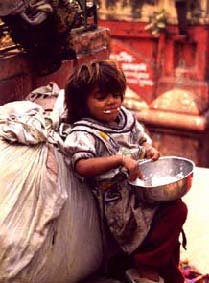 According to Nobel Laureate Amartya Sen, there should be millions more women and girls living in India than there are. The acclaimed economist compared the natural ratio of men to women globally with the ratio in India, and twenty years ago had calculated that India was “missing” about thirty-seven million women. That number has escalated to fifty million today.
According to Nobel Laureate Amartya Sen, there should be millions more women and girls living in India than there are. The acclaimed economist compared the natural ratio of men to women globally with the ratio in India, and twenty years ago had calculated that India was “missing” about thirty-seven million women. That number has escalated to fifty million today.
Rita Banerji ’90, whose photographs bravely document some of India’s least treasured citizens, explains, “Perhaps ‘missing’ is too innocuous a term for what is actually happening—the systematic and targeted annihilation of a group [through] female feticide, female infanticide, dowry-related murders, an abnormally high mortality rate for girls under five due to starvation and intentional medical neglect, and the highest maternal mortality rate in the world.
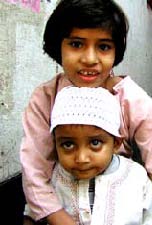 Numbers tell the story in chilling detail:
Numbers tell the story in chilling detail:
- Some one million female fetuses are aborted each year.
- Midwives in some regions regularly kill the infant girls they deliver for as little as $1.50.
- Dowry-related murders of women stand at about 25,000 cases a year.
- A UNICEF report found that the mortality rate for girls under five is more than 40 percent higher than for boys the same age.
- WHO and UNIFEM estimate that one pregnant woman dies every five minutes in India.
These conditions persist due to a deep-rooted mind-set Banerji describes as “unresisting acceptance of female genocide. It’s almost like ‘this is cultural, normal, how it is and will always be.’”
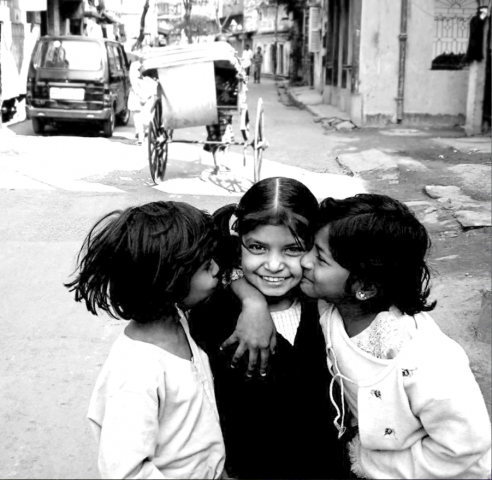 So the first challenge for the “Fifty Million Missing” campaign, which Banerji founded in 2006 and that aims to eliminate “the ongoing female genocide” in India, is overcoming the public’s doubt, denial, and apathy.
So the first challenge for the “Fifty Million Missing” campaign, which Banerji founded in 2006 and that aims to eliminate “the ongoing female genocide” in India, is overcoming the public’s doubt, denial, and apathy.
“Acknowledgment is crucial before action can be taken,” she admits. “And people are starting to listen and to discuss this. While it may take more than a century for mind-sets to change, we cannot in the meantime allow this genocide to go on unhindered.”
Banerji set up the campaign with an online photo that now has close to 10,000 images of Indian girls and women, information galleries full of facts, and discussion galleries to promote debate about problems and possible solutions. A petition drive aims to pressure India’s government to hold accountable those who currently get away with murder.
As chief administrator and campaign coordinator, Banerji monitors the Web site, speaks at workshops and seminars, and spreads the word about the organization’s goals.
Plans include getting what’s happening in India formally declared as genocide under the United Nations Convention; a sweeping survey of gender relationships and roles in India; workshops in schools and communities to redefine gender concepts, attitudes, and behavior; and setting up resource centers with medical and legal aid, counseling, and rehabilitation for women who are victims of domestic violence and/or attempted murder.
Raised with “the same unresisting acceptance of female genocide in India as the rest of educated, middle-class India,” Banerji says she wonders “if I would have viewed the issue of genocide here the same way my family does had I not spent those very crucial years of development at Mount Holyoke.”
Self-taught photographer Banerji loves to shoot images “out of a pure sense of aesthetics,” but also consciously uses the medium to make “a statement on the society I live in.” She hopes that her images won’t be all that remains of India’s female population.
—By Emily Harrison Weir
—Photos by Rita Banerji ’90
This article appeared in the summer 2008 issue of the Alumnae Quarterly.
Learn More
- Q & A with Rita Banerji
- Roopa’s story: the complexities of helping abused women
- Help with Research about Gender Roles
Q&A: Rita Banerji speaks with the Alumnae Quarterly about violence against Indian Women
What does the name of your campaign, Fifty Million Missing , mean? Who’s missing, and why?
The word “missing” simply means “eliminated.” It was a word first used by the Nobel Laureate, Dr. Amartya Sen to refer to the number of women that he calculated should have been in the population, but were not. Perhaps it is too innocuous a term for what is actually happening—which is a systematic and targeted annihilation of a group. In India the accounting factors are: female feticide, female infanticide, dowry related murders, an abnormally high mortality rate for girls under five due to starvation and intentional medical neglect, and the highest maternal mortality rate in the world.
Usually, if we take the industrialized countries of Europe and North America, the natural ratio of men to women is about 100:107. Dr. Sen actually used an even lower bench-mark of 100:102 men to women (which he got from sub-Saharan Africa) as the average for developing countries. And, using the census data, in 1986, he calculated that India was “missing” about 37 million women. That number kept escalating, and now it is estimated at about 50 million. Why?
- Female fetal abortions are estimated at 1 million a year, and expected to rise to 2–5 million per year over the next few years.
- Female infanticide is more common in the rural areas, primarily because it is much more affordable than ultra sounds and sex selected abortions. Kerala, India’s most literate state with about a 98% literacy rate, accounts for about 25,000 female infanticides a year, while in states like Bihar, Punjab, Rajasthan, and U.P., which are ferociously patriarchal, the scenario is far worse. A midwife is paid about 60 rupees, approx. $1.50 US, to kill the baby she has delivered, if it turns out to be a girl.
- Then there are dowry related murders, approximated at about 25,000 cases a year and increasing.
- According to a 2007 UNICEF report on the State of the World’s Children, the under-five mortality rate for girls in India is more than 40 percent higher than for boys the same age, because parents prefer not to spend on the girls, which results in death due to starvation and medical neglect.
- Because of the forced and repeated abortions women are made to undergo by their in-laws and husbands, India has the highest maternal mortality rate in the world. WHO and UNIFEM estimate that one pregnant woman dies every five minutes in India.
How did you get involved with this project, and what is your day-to-day role now?
I founded the campaign [online] in December 2006. Anyone, anywhere in the
world can join the group and contribute to and/or view our photo , our discussion galleries, and our information galleries.
My role right now is chief administrator and coordinator of the campaign. In all there are six administrators and four moderators from seven countries. Besides working on monitoring the Web site on a daily basis and building the information galleries, I also publicize the campaign and its goals through presentations to organizations, interviews with newspapers, and participation in workshops and seminars. We are also in the process of setting up as an organization (a very tedious and bureaucratic process in India), which means we can now have a real office and much more scope and leeway with ground projects.
What success has the campaign had?
The first challenge for this campaign is to overcome three major blocks: doubt, denial, and apathy in the public at large. Acknowledgement is crucial before action can even be taken. And people are starting to listen, to discuss this with other people they know, and even the media has been approaching us, so that is an important breakthrough for us.
Our Flickr group has close to 2,000 participating members from all over the world. The photo now has close to 10,000 photos of Indian women and girls—fantastic photos by both amateur and professional photographers from more than fifteen countries. We have some very interesting series. For example, French photographer Claude Renault, who is a member, did a very poignant series on the widows of Vrindavan and Benaras. These are two of India’s holiest cities where about 40,000 homeless widows from all over India live and beg on the streets, widows who’ve been deprived of their inheritance and driven out of their homes by their sons!
Our discussion galleries have news postings as well as some very heated debates on issues of concern. And our information galleries, which are still being constructed, combine comprehensive information on relevant topics with some of the best photos from our galleries. This is also the basis of some of our future projects: books, traveling photo exhibitions, postcards, etc.
Very importantly, on Women’s Day this year we launched our online global petition. The aim of the petition is to hold the government of India and its agencies accountable for the female genocide in India and compel it to act urgently and by a set date to arrest this atrocity. Undoubtedly, it is a deep- rooted cultural mindset that is the cause of this, but it is the legal permissiveness, basic lawlessness, that allows for this genocide to continue. And while it may take more than a century for mindsets to change, we cannot in the meantime allow this genocide to go on unhindered.
So one of the first ground projects we are going to do is a massive survey of gender relationships and the development of gender roles in India, across all classes and sections. We will use other countries and cultures as control studies. I think our understanding of this is crucial to how we target projects and programs for long-term change in collective thinking.
How long have been photographing? Did you train formally in photography or are you self-taught?
I am self-taught. And it was around 1999 that, with my first Canon SLR, I began experimenting with the camera. I wish digital had been around then, because using film to experiment and learn was a very expensive way of doing it.
Do you see your photography primarily as art, as a tool for political education, or in some other way?
For me it is a very versatile tool. I do love to photograph things and places for no particular reason but just out of a pure sense of aesthetics. I had done a series a year or so ago on the old colonial houses of Calcutta. And I had also created a series in sepia of romanticized images of old Calcutta, like the trams, the coconut seller, the old cathedral, etc.
But I do tend to use photography more as a tool of individual expression, a statement on the society I live in. Some pictures are instantaneous. I take them just as an instinctive response, and their implications sink in later. Something like watching this old woman—scavenging for food alongside street dogs and crows in a garbage dump—was shocking and angering. But some pictures are intentional, like photographing Roopa (see “Roopa’s story,” below), with her permission as well as her parents’ permission. I felt it was necessary, because people needed to see what is happening to young women here—criminals acts that go totally unpunished. But because of this issue of “family shame,” most dowry victims in India don’t want to be photographed.
One of the most surprising aspects of photography for me has been how it can be such an enjoyable medium of human bonding. Generally I find that when I’m photographing subjects as mentioned above, that just for the briefest moment there is a withdrawal, an odd detachment. Yet sometimes when I’m photographing total strangers, there is this brief, warm, personal connection, for no reason. It is very spontaneous, and I’m forced out of hiding from behind my lens. And when I see those pictures, I’m there in them, because they are responding to me. And now with the digital [cameras] they love to crowd around after, and together laugh and view the pictures.
What kind of work are you doing these days?
I do freelance photography for journals, as well as private parties, etc. I also write articles when I can. The campaign does take up a lot of my time every day, and increasingly so as we prepare to set up as an organization.
The other project which takes up a lot of my time is the nonfiction book that I’ve written for Penguin (India), which will be released in India by this summer’s end. I believe it will be released outside India too, but I don’t know the schedule for that. It is a social and historical look at the change in sexual morality in Indian society over the ages, and it asks what determines a society’s attitude towards sex at any given time, and what causes it to change over time.
India was perhaps the first country to do a thorough study of sex and sexuality in the most scientific and systematic manner, and that was 1,600 years before Masters and Johnson. In the first millennium A.D., the kamashastras—“the knowledge of lovemaking”—was a formal art and science, and socially there was a far more open and explorative attitude towards sex, in contrast to modern India, which is extremely prudish and closeted. This is significant in view of the fact that the three most important crises facing India today are sex-related: India will have the largest population by 2020; it has the largest number of HIV carriers in the world; and it has reduced women to sexual commodities to be used and disposed of at will … and the result is female genocide. I use a variation of Nietzsche’s slave-master hypothesis to show that sexual morality in any society, at any given time, is determined by the power structure at that time, and it not only serves the power camp but it also changes to suit the needs of the new power camp.
What is your goal with the Fifty Million Missing Campaign, and how does photography fit into that?
The primary goals are:
- To bring the issue of female genocide in India into the international
limelight, for what allows it to continue is its obscurity. - To establish that what’s happening in India is genocide according to the 1948 U.N. Convention on Genocide’s definition.
- To put pressure (through our online petition, legal measures, etc.) on the government of India to enforce its laws pertaining to homicide, dowry, and sex-selected abortions; to hold its police and judiciary, as well as the medical establishment, accountable; and to effectively arrest this genocide by a set date.
Our long-term goals are:
- To do a massive survey of the concept and development of gender roles and gender relationships in India.
- Based on our study, set up workshops geared toward schools and communities to reassess and redefine gender concepts, attitudes, and behavior. (Ultimately, it’s the mindset that has to change.) We’d also target school curriculums, advertisements, media, film, etc.
- Set up resource centers with medical and legal aid, counseling, and rehabilitation for women who are victims of domestic violence and/or attempted murder in India.
We have more than 1,600 photographers who are supporting members of this campaign, and because of their powerful visual impact, photographs are a part of various projects that we have planned—including advertisements, books, postcards, touring exhibitions, etc.—to bring attention to our cause, and have people support us by signing the petition. We are going to start looking for volunteers to help with our surveys, workshops, and the women’s resource centers.
I hope to continue to use [photography] for the cause I’m fighting for, as well as enjoy the pure pleasure it gives me sometimes—doing portraits of friends and family, or just hours of solitude when I’m photographing flowers or leaves and thinking of nothing but the perfect exposure. That is total relaxation.
What would you want readers to know about you personally?
I remember even way back in 1986, friends and dorm-mates at Mount Holyoke would complain about the “abnormality” of an all-women’s campus. But I sometimes wonder if I would have viewed the issues of genocide here in India the same way that my family does, had I not left the country at eighteen and spent those very crucial years of development as an individual and a woman at Mount Holyoke. My family is middle-class and educated, and yet has the same unresisting acceptance of female genocide in India like the rest of educated, middleclass India—almost like “this is cultural, this is normal, this is how it was and will always be and there is nothing you can do to change it.” In fact they think it is ridiculous to even call it genocide.
My sense of the world now is that it is not just dominated by but also defined by men. And when we as girls and women evolve in it, we involuntarily become its form and function. That is why we need secluded environments—like an all-women’s campus, like the shelters for women we’ll set up in India—where we can discard the idea of the world we’ve been force-fed and, with a clarity of vision of self, redefine our place in it as women and as human beings. And then set out to implement that vision.
ROOPA’S STORY: the complexities of helping abused women
 Roopa (left) is a seventeen-year-old victim of India’s rapidly increasing dowry-related attacks and homicides. According to Banerji, her in-laws forced acid down her throat when her parents refused to pay dowry. Her internal organs are badly burnt and damaged and she has to be fed through a tube in her stomach.
Roopa (left) is a seventeen-year-old victim of India’s rapidly increasing dowry-related attacks and homicides. According to Banerji, her in-laws forced acid down her throat when her parents refused to pay dowry. Her internal organs are badly burnt and damaged and she has to be fed through a tube in her stomach.
Below, Rita Banerji tells Roopa’s story.
“Another very important accomplishment was that we intervened in the case of a young woman named Roopa, a dowry victim, whose husband and in-laws had forced acid down her throat because her parents had refused to pay them dowry money. Roopa had been rescued by her parents and brought back to their home, but she was in a terrible way. Her insides were badly burnt and for five months she couldn’t orally consume food and had to be fed through a tube in her stomach. She was wasting away and would not have survived without major surgery, which her parents could not afford.
“So as a group we rallied to help collect funds for her surgery and rehabilitation. It took six months for her to look normal again, but that was such a miracle. We had started legal proceedings against her husband and in-laws and Roopa had begun counseling therapy, and wanted to work as an office assistant. So we were educating her, teaching her English, math, typing, and computers, and she was making rapid progress. However eventually she chose to return to her in-laws’ house, which was very shocking to us. We first thought it was because of her child, but when we attempted to remove her and the child from there, she resisted.
“Roopa’s was a trial case. But it provided us with the basis of the processes and challenges involved in such cases—since in the future, we plan to set up resource centers to aid women like her.
“And the biggest lesson we learnt from Roopa’s case is that the models of working with domestic abuse issues in the West will not work in India. What we are discovering now, by talking to other groups that work with domestic abuse, is that even if women in India are given a ‘safe home,’ education, rehabilitation, and job placement, many opt to return to their in-laws/husbands’ homes (since these are joint families).
“And the reason is that, whereas in the West a woman who makes a move to be independent is now lauded, in India, a woman who leaves her husband (even if he attempts to kill her) is regarded as characterless. She has no standing in society, largely because of India’s fixation on family as sacred and unquestionable. India’s social and legal culture strives to maintain the integrity of the family at the cost of women’s/girls’ lives. Our law does not even classify these dowry-related murders as homicide: it states “if a woman dies of dowry death…” as though it is a clinical condition, and awards a maximum penalty of seven years of imprisonment for the husband and in-laws, if convicted. Moreover, not one family of the thousands that have murdered their baby girls within the first month of birth has been indicted.
“Roopa faced tremendous ostracism from her community for leaving her in-laws’ house. In a culture like India’s—where self-worth is defined not by a sense of individuality but by how the society collectively views you—it appears that ultimately it did not matter to Roopa that she had her family and all of us rooting for her, and helping her every step of the way, if the rest of her community and neighborhood had isolated her. Her self-esteem was vested in her marriage, and that is what she decided to return to even if it means it could kill her.
“And the lesson I think we learnt from this is that we most probably will need to do some form of preselection for the women we reach out to. There has to be an element of nonconformism in them, to be able to survive this social pressure, if want the aid we give to have any impact in terms of social change. (This is perhaps the most controversial aspect of our future plans). What is key here is how women in India view themselves and view their role in society.”
Help with Research about Gender Roles
The Fifty Million Missing Campaign is planning a massive survey of gender relationships and the development of gender roles in India, using other countries and cultures as control studies.
Thus, Banerji is looking for a team of professional advisers to help define the study’s parameters and design appropriate surveys. She also seeks universities and colleges within India and outside India willing to help collect data for the study.
To find out more, or to volunteer to help with the project, contact Banerji at
50millionmissing@gmail.com.
August 29, 2008


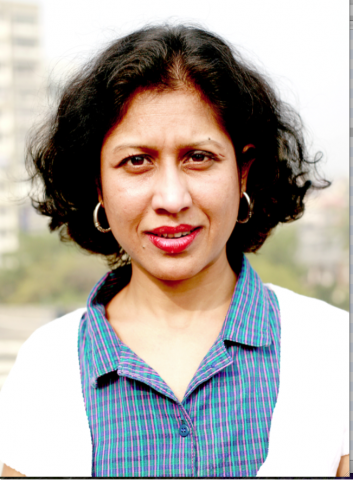






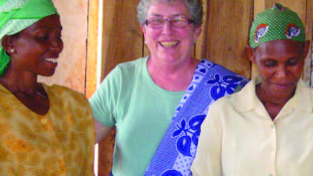

Actually it is generally assumed that India’s female genocide is due to mass illiteracy, lack of formal education and or poverty. But actually surveys show that there is no definite co-relation, or cause and effect factor. The highest rates of female feticide are among the wealthiest sectors of the urban population, who also happen to be be educated professionals!
There is an intrinsic, cultural devaluation of women that needs to be addressed squarely, and the government has to implement laws regarding disclosure of gender during ultra sounds, as well as homicide (as in the case of female infanticide and dowry related murders). People often say we have to change the mindset.
But think of it — if we waited for the populations mindset to change in order to implement racial segregation in the U.S. or apartheid in South Africa — we would have been waiting for ever!
We cannot wait for people’s attitudes to change towards gender in India. The laws have to be implement first!
This has been going on for many centuries, its only now that the international community has noticed it. India is a wonderful country but it has its share of problems. Kalpana Sharma states that things are changing, whereas as in the big cities this may be true, I doubt if the situation in the villages will change unless the population there is educated.
The other day I came across a young boy of six in my daughter’s pre school, who said my child hits other kids including his sister who happens to be in my daughter’s class.
He went on to say that only boys hit, girls do not. I was aghast! This was the supposedly most reputed of schools.
As a mother of a young girl, I am sick of teachers, neighbours telling me, my daughter dresses like a boy.Boys dare not wear frocks or p[ink clothes, lest they be taken as girls.What is this if not discrimination at its worst?
Yes I agree women are the best upholders of patriarchy but the way towards self-realisation can not be in an all women world.All schools must be co-ed-we have to teach the boys how to live with girls.
This item is both riveting and horrifying. Many of us had probably heard about the issue in a general way without having any idea of its scope or magnitude. I hope to see a follow up piece in some future issue of the Quarterly.